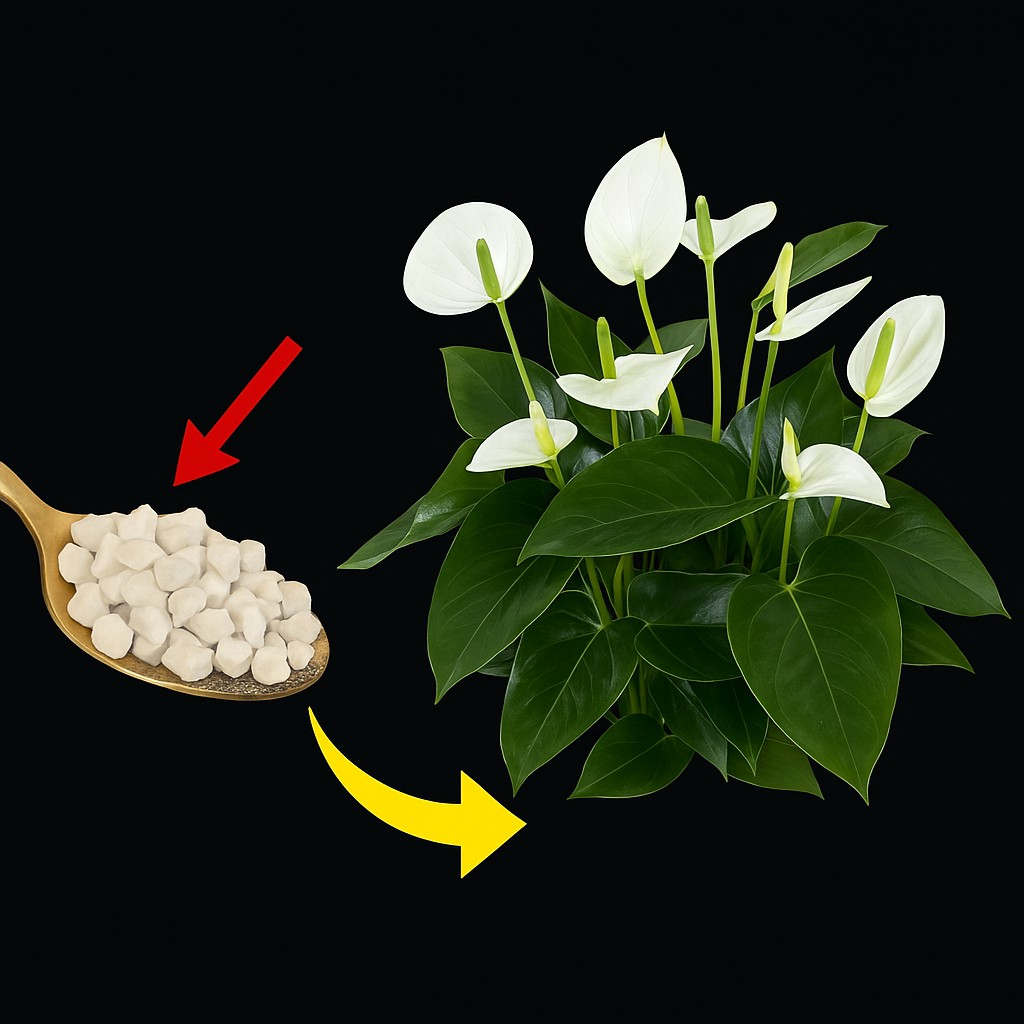ADVERTISEMENT
**Peace Lily: How to Make It Bloom for Up to 10 Years in a Row with This Simple Ingredient**
The peace lily (Spathiphyllum) is one of the most beloved houseplants, thanks to its elegant, dark green foliage and its stunning white blooms. It’s often seen in homes, offices, and even hospitals because of its air-purifying qualities and its ability to thrive in low light. If you have a peace lily in your home, you’re likely familiar with its ability to produce beautiful white flowers, but you may have also experienced frustration when your plant stops blooming or struggles to thrive. One of the most common questions about this plant is, “How do I get my peace lily to bloom consistently?”
If you’ve found that your peace lily isn’t blooming as you’d like, or if you’ve struggled with getting it to bloom year after year, then you’ve come to the right place. There’s a simple solution—a secret ingredient—that can encourage your peace lily to bloom for up to 10 years in a row!
In this article, we’ll explore everything you need to know about the peace lily, why it sometimes fails to bloom, and the secret ingredient that can help keep your plant blooming beautifully year after year. We’ll also offer care tips and advice on how to ensure that your peace lily remains healthy and vibrant.
### What Makes Peace Lilies So Special?
Before we dive into the secret ingredient, let’s first take a moment to appreciate what makes peace lilies such a popular and special plant. Native to the tropical regions of Central and South America, peace lilies are known for their resilience and adaptability. They thrive in environments with low to moderate light, making them perfect for indoor spaces that don’t receive a lot of direct sunlight. They also offer several benefits that make them ideal for home and office spaces.
#### The Peace Lily’s Stunning Appearance
The peace lily has striking, glossy, dark green leaves and produces large, white flowers known as spathes. The flower itself is not actually a “true” flower but a spathe (a modified leaf) surrounding a spadix (the true flower). This unique floral arrangement gives the peace lily its signature look.
While the plant is beautiful year-round, it is particularly admired for its occasional blooms, which bring a bright burst of white to the otherwise green foliage. Many people find joy in the blooming period, as it’s a symbol of peace and tranquility.
#### Air-Purifying Qualities
One of the reasons peace lilies are so popular is due to their air-purifying qualities. They are known to filter harmful toxins from the air, including benzene, formaldehyde, and trichloroethylene. The Environmental Protection Agency (EPA) has even included the peace lily on its list of plants that improve indoor air quality. This makes them an ideal choice for homes, offices, and other indoor environments where air quality might be less than ideal.
#### Peace Lily Care Requirements
To keep a peace lily healthy and blooming, it’s important to understand the plant’s basic care needs. Though it’s generally easy to grow, there are a few factors that must be considered to ensure optimal growth and flowering:
– **Light**: Peace lilies thrive in moderate, indirect light. Direct sunlight can scorch their leaves, while too little light may hinder their ability to bloom. They are well-suited for spaces like offices or bedrooms with filtered light.
– **Watering**: Peace lilies prefer consistently moist soil but should never be left sitting in water. Overwatering or underwatering can both cause issues. The best practice is to allow the soil to dry slightly between waterings.
– **Humidity**: Being native to tropical regions, peace lilies thrive in humid environments. If the air in your home is dry, particularly in the winter, misting the leaves or using a humidifier can help.
– **Fertilization**: Peace lilies benefit from regular feeding with a balanced, water-soluble fertilizer during the growing season (spring and summer). Fertilizing too often or with the wrong type of fertilizer can cause stress to the plant.
For Complete Cooking STEPS Please Head On Over To Next Page Or Open button (>) and don’t forget to SHARE with your Facebook friends
